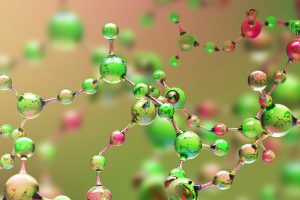
New 3D printing technology produces “living” polymers
Canadian Plastics
Materials Research & DevelopmentResearchers in Australia and New Zealand have successfully merged 3D/4D printing with a chemical process to produce “living” resin, with huge potential for fields as diverse as recycling and biomedicine.

Photo Credit: Siarhei/Adobe Stock
In a development that could advance the recycling and reuse of plastics, researchers in Australia and New Zealand have unveiled a 3D printing process that creates an environmentally-friendly “living” plastic or polymer.
The pioneering work is the result of research collaboration between UNSW Sydney and the University of Auckland. The researchers have revealed the successful merging of 3D/4D printing and photo-controlled/living polymerization – a chemical process to create polymers – in a paper published recently in Angewandte Chemie International Edition.
4D printing is a subset of 3D printing where the printed object can transform its shape in response to certain conditions.
The new controlled polymerization method, where the researchers used visible light to create an environmentally-friendly “living” polymer, opens a new world of possibilities for the manufacture of advanced solid materials, the researchers said.
Polymers can be synthetic (such as plastic), as well as biological (for example, DNA).
The research built upon the UNSW Sydney Boyer Lab’s 2014 discovery of the so-called “Photoinduced Electron/energy Transfer-Reversible Addition Fragmentation Chain Transfer polymerisation” – or PET-RAFT – which is a new way to make controlled polymers using visible light. Such polymers can be reactivated for further growth, unlike traditional polymers which are “dead” and unalterable after being made.
Lead author Cyrille Boyer said his team’s latest breakthrough is a world-first in the development of a new 3D printing system using PET-RAFT polymerization, to allow 3D-printed materials to be easily modified after printing. “Controlled polymerization has never been used in 3D and 4D printing before, because the rates of typical controlled polymerization processes are too slow for 3D/4D printing, where the reaction must be fast for practical printing speeds,” Boyer said. “After two years of research and hundreds of experiments, we developed a rapid process compatible with 3D printing. In contrast to conventional 3D printing, our new method of using visible light allows us to control the architecture of the polymers and tune the mechanical properties of the materials prepared by our process. This new process also gives us access to 4D printing and allows the material to be transformed or functionalised, which was not previously possible.”
A bonus advantage of the technology, UNSW’s Nathaniel Corrigan said, is the ability to finely control all molecules in the 3D-printed material. “4D printing is a subset of 3D printing. But with 4D printing, the 3D-printed object can change its shape and chemical or physical properties and adapt to its environment,” Corrigan said. “In our work, the 3D-printed material could reversibly change its shape when it was exposed to water and then dried. For example, the 3D object starts as a flat plane and when exposed to certain conditions, it will start to fold – that’s a 4D material. So, the fourth dimension is time.”
A WEALTH OF POTENTIAL
The researchers believe the new technology has the potential to be used in multiple ground-breaking applications. In the everyday sphere, Boyer said, it has a multitude of possible uses, particularly if a deformed or broken object needed to be repaired or modified. “The main application is of course recycling, because instead of using a plastic object once, it can be repaired and reused,” he said. “For ordinary recycling you take the materials away and have to reconstruct them, but for the new ‘living’ material it will be able to repair itself. For example, if you want to put the UNSW logo on a mug, you can modify the surface of the object and grow the polymers to show UNSW because the object is not dead; it’s a living object and can continue to grow and expand.”
An equally important use for the technology lies in biomedicine. Boyer said that objects made through this new process could more easily be used in advanced bio-applications – such as tissue engineering, for example – where a tissue structure is used to form new, viable tissue for medical purposes. “Our new method targets small-scale, niche applications in fields like microelectronics and biomedicine – a huge area for us – that require very advanced polymers,” he said. “This new technique would allow commercial and non-expert operators to produce materials with seemingly endless properties and applications.”
